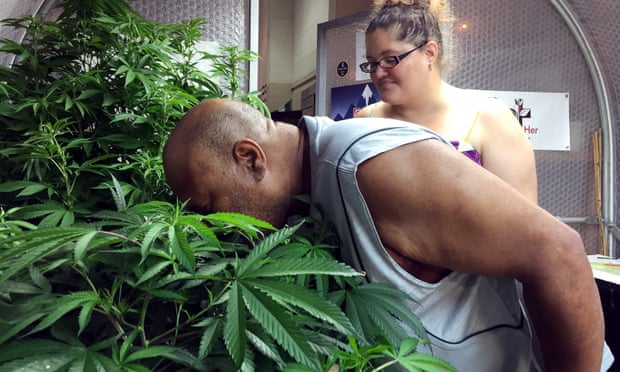Keith Humphreys, Washington Post
“Most of the marijuana market is more Wal-Mart than Whole Foods,” says Carnegie Mellon University Professor Jonathan Caulkins, the lead author of Marijuana Legalization: What Everyone Needs to Know. Caulkins’ analysis of data from the federal government’s National Survey on Drug Use and Health (above) shows that “college grads account for only about one-in-six days of use," the common measurement for national marijuana use.
The remaining 5/6 of today’s marijuana market comprises, from largest to smallest share, high-school graduates, people who attended some college (over 90% of whom are no longer enrolled), high school dropouts and teenagers. All these population groups tend to have modest incomes, which Caulkins notes means that “they are likely to be price-sensitive and drawn to less costly brands."
Marijuana use in the U.S. is thus like tobacco use: A behavior concentrated in lower social capital groups. Why then is the modal cultural image of pot that of hipster professionals clucking over arrays of $500/ounce sinsemilla blends at upscale dispensaries in San Francisco or Boulder, rather than, say, that of a gas station attendant who smokes low-cost weed several times a day?
The answer may be that journalists, pundits, elected officials and policy analysts, like all human beings, have a tendency to overestimate the representativeness of their own experience. The college-educated chattering classes portray and discuss the world they know, which in fact is a small slice of the U.S. marijuana scene.
To the extent that both criminal sanctions and health damage connected to marijuana fall more heavily on lower income groups, college-educated public policymakers and advocates may not well appreciate how marijuana use and marijuana policy play out in the lives of the typical user. In contrast, with their culture of researching markets in search of profits, rising marijuana entrepreneurs will quickly come to pursue the potential fortune at the bottom of the pyramid. Caulkins predicts that “this will lead them to promote value-priced brands, not just high-end artisanal versions”."

No comments:
Post a Comment
Note: Only a member of this blog may post a comment.